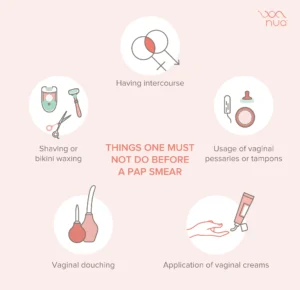Understanding the Pap Smear: A Crucial Screening for Women's Health
What is a Pap Smear?
A Pap smear, also known as a Pap test, is a medical procedure used to screen for cervical cancer in women. Named after Dr. George Papanicolaou, who developed the test, the Pap smear involves collecting cells from the cervix, which is the lower, narrow end of the uterus that opens into the vagina. These cells are then examined under a microscope to detect any abnormalities, including precancerous and cancerous changes, infections, or inflammation.

Why is the Pap Smear Important?
The primary goal of a Pap smear is to detect cervical cancer at an early stage when it is most treatable. Early detection significantly increases the chances of successful treatment and survival. Additionally, the Pap smear can identify precancerous changes, known as cervical dysplasia, which can be monitored or treated to prevent the development of cervical cancer.
The Procedure: What to Expect
During a Pap smear, a healthcare provider will:
1. Ask the patient to lie on an examination table with feet placed in stirrups.
2. Insert a speculum into the vagina to widen it, providing access to the cervix.
3. Use a brush or spatula to gently scrape cells from the cervix.
4. Place the collected cells on a glass slide or in a liquid-based solution for laboratory analysis.
The procedure is usually quick, taking only a few minutes, and while it may cause mild discomfort, it is not typically painful.
Guidelines and Frequency
– Age 21-29: It is recommended that women have a Pap smear every three years.
– Age 30-65: Women should have a Pap smear combined with an HPV (human papillomavirus) test every five years or a Pap smear alone every three years.
– Over 65: Women who have had regular screenings with normal results may not need further Pap smears, as advised by their healthcare provider.

Scope of Pap Smear in India
In India, cervical cancer remains one of the most common cancers among women. However, the uptake of Pap smears is relatively low due to factors such as lack of awareness, limited access to healthcare facilities, and cultural barriers. Efforts are being made to increase awareness and accessibility through national screening programs and initiatives by non-governmental organizations. Increasing education about the importance of regular screenings and making Pap smears more accessible in rural and underserved areas are crucial steps in reducing the incidence of cervical cancer in India.
Alternatives to Pap Smear
While the Pap smear is the most common method for cervical cancer screening, other options are available:
– HPV Test: This test detects the presence of high-risk HPV types that are most likely to cause cervical cancer. It can be done alone or in conjunction with a Pap smear (co-testing).
– Visual Inspection with Acetic Acid (VIA): This involves applying acetic acid (vinegar) to the cervix and visually inspecting it for abnormalities. VIA is a cost-effective alternative often used in low-resource settings.
– Liquid-Based Cytology (LBC): Similar to the traditional Pap smear, but cells are suspended in a liquid medium before examination, potentially improving the accuracy of results.
Conclusion
The Pap smear is a vital screening tool for the early detection of cervical cancer, significantly contributing to women’s health. While it has become routine in many parts of the world, increasing its uptake in countries like India is essential. Alternative methods such as HPV testing and VIA also play a crucial role, especially in resource-limited settings. Regular screening and early detection remain the best defense against cervical cancer, underscoring the importance of these life-saving tests.
Reference
For more detailed information, you can refer to resources from the:
[National Cancer Institute](https://www.cancer.gov/publications/dictionaries/cancer-terms/def/pap-smear),
[Healthline](https://www.healthline.com/health/pap-smear-pap-test-what-to-expect), and
[Wikipedia](https://en.wikipedia.org/wiki/Pap_test).
